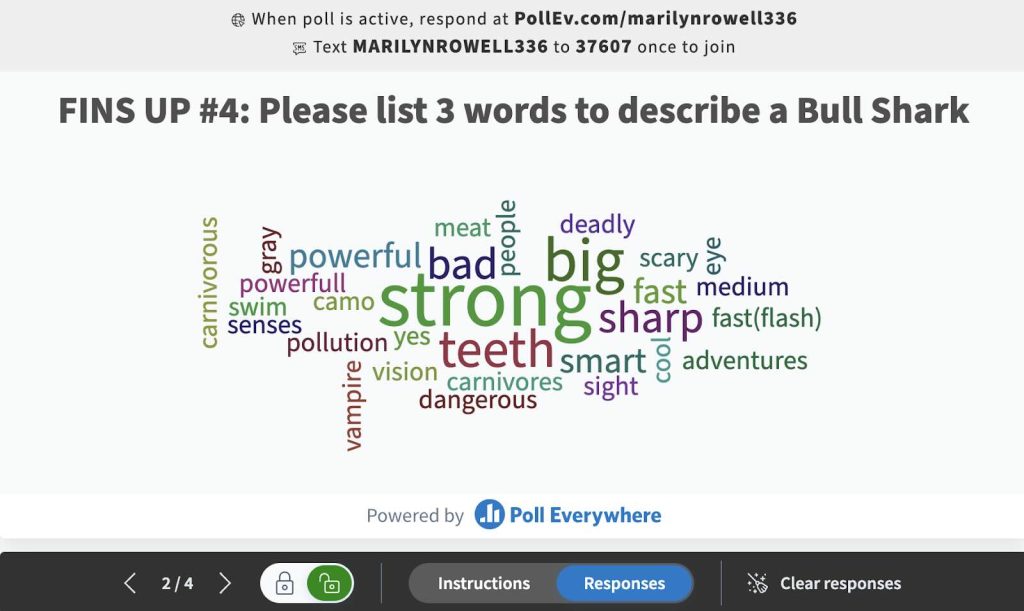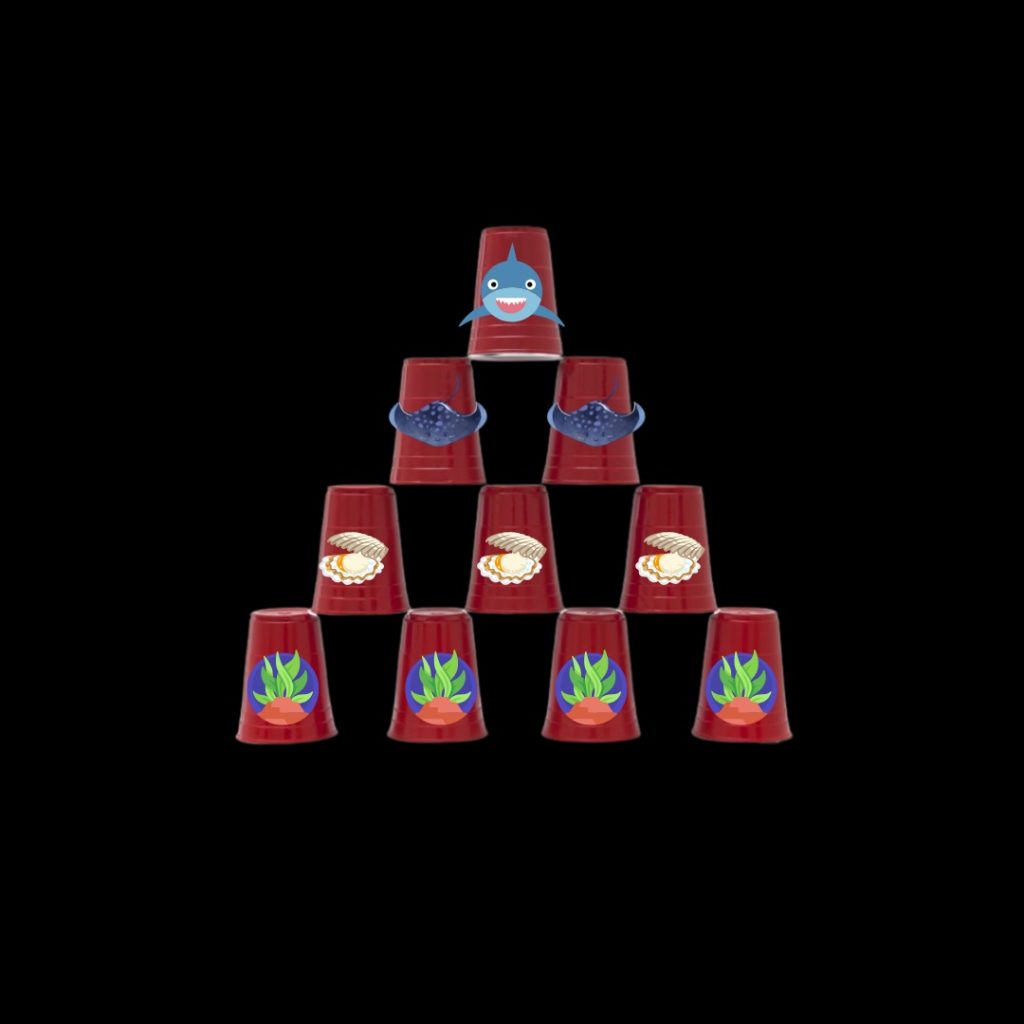Shark Stewards Guest Blog Post Marilyn Rowell, M.S.
Fisheries & Aquatic Sciences – Virginia Beach
What is Science Communication and Public Education?
Science communication is the ability to engage a wide array of audiences regarding environmental concerns, utilizing a framework set forth to hook participants into educating more on pertinent topics, and strategically designing a solution for next steps. Science is meant to be engaging and fun for all ages of learners and educators, and this means presentations should be designed for all levels of thinkers. Knowing one’s audience helps to develop a framework best suited for one’s concern, and grouping. The utilization of entrance hooks, explanatory chains, metaphors, and more help to provoke an emotional response from community members, which elicit a desire to help a cause.
Framing is a communication style that formats information in a specific way for a variety of audiences. Framing helps to guide the way information is presented, which is the essence of science communication and public education. The goal is to provide value to the viewer, and to help them engage more in depth about the topic. The configuration is detailed, easy to understand, and provides a solution that resonates with the viewer. Framing is important to science communication because it helps to set the literal framework on how to share information with groups of people, and to encourage future discussions about the topic moving forward. It gains the interest of the audience and its readability or presentation fits how the audience listens, obtains, and processes information.
The Goal of Science Communication and Public Education

The goal of environmental education is to help educate and inform individuals about environmental issues/problems, and to help them produce an informed decision about their next steps. This helps to create a deeper understanding of the topics involved, and teaches others with the use of factual evidence to make responsible decisions. These processes strive to positively change/strengthen one’s attitude about the environment, and to enhance their problem-solving and critical thinking skills. When it comes to shark populations, I think that knowledge and participation are so important to the cause. Many students may not realize how the ocean or marine ecosystems are connected to and impacted by them. Understanding environmental challenges, and recognizing how everything is interconnected makes a big difference in level of care. When you look at participation, that is the act of participating in an activity to help with the resolution, whether that is directly or indirectly. For example, checking the label on tuna fish cans is indirectly helping the shark populations (WHY?). The student is not actively on a boat saving sharks, but they recognized the problem and found ways for applicable participation which also makes a difference. That is a tangible thing students in a K-12 classroom can do. Beyond that, most of what I speak about is educating the public and that falls within the realm of increasing one’s knowledge of a topic.

Why is Science Communication and Public Education Important for the General Public?
In 1968 an environmentalist named Baba Dioum made a speech In New Delhi, India, to the general assembly of the International Union for Conservation of Nature. He stated the famous quote that, “in the end, we will protect only what we love. We will love only what we understand. We will understand only what we are taught.” Overall, humans want to make good choices for the environment, for their families, for themselves, etc. This requires scientists to provide quality and straightforward data, and have the dexterity to adapt to our ever changing culture and generations. Classrooms strive to continually develop scientific literacy amongst their students as it helps students to be curious and knowledgeable about the world around them, actively participate in scientific discussions, critically evaluate claims made about scientific issues, formulate questions, conduct investigations, reach evidence-based conclusions, and make informed choices regarding the environment and their personal health and well-being. Now, more than ever, community members are gaining an interest in science related matters, and this truly starts at a young age. Allowing our kids to play with science instruments, learning through the use of hands-on projects, and life experiences. Even as adults, we learn through education and the ability to connect to things. This is a huge reason why metaphors are so important in the framing of science work, as they are the main vehicles for communicating science to non-scientists and they can be used by scientists in all phases of research. They help to provide a deeper understanding, and communicating from experiences, “asks researchers and practitioners to shift their focus from knowledge, behavior, and attitudes to interpretation, meaning, and significance, without placing undue importance or weight on any particular intervention,” or solution. Keeping the engagement and higher level thinking, leads towards curiosity from viewers about the solution, or if anything, the desire to learn more.
Co-Development of a Museum-Based Scientist-Teacher Partnership
During my Masters program I knew that I was passionate about sharing my shark conservation knowledge and research with the public. I utilized my aquatics content, along with middle school teachers’ pedagogical knowledge, to co-develop an impactful curricular resource and presentation through a community-based participatory approach (CBPA). The project focused on Bull Shark ancestral history, anatomy, habitat, adaptations, diet, benefits of apex predators in marine ecosystems, IUCN Red List of Threatened Species, and human impact on Bull Shark populations (bycatching, overfishing, and habitat loss). I spoke on catch limits, habitat conservation practices, pollution, sustainable food choices, and how to educate the community on protecting wildlife and understanding human-wildlife conflicts. Through this process I was able to reach over 1,000 Florida students through various programs in and out of a middle school classroom setting. If you would like to read more, the aforementioned project was published in the National Science Teaching Association, Connected Science Learning Journal titled “Co-Development of a Museum-Based Scientist-Teacher Partnership” linked here: https://doi.org/10.1080/24758779.2023.2296751
About the Author
Marilyn Rowell is a volunteer with Shark Stewards, a graduate of The University of Florida in 2022 with a Masters Degree in Fisheries and Aquatic Sciences, and Birmingham-Southern College in 2017 with a Bachelor of Art Degree in Environmental Science and a minor in sociology. She has a passion for aquatic sciences, environment sustainability/sociology, and science communication. Due to the ever growing human population, we need to better understand how to save our ecosystems while managing a healthy and inhabitable world. Her goal is to effectively learn how to provide critical information needed for the development of management approaches that ensure the integrity and sustainability of critical natural resources and animals.
Follow her @elasMARbranch